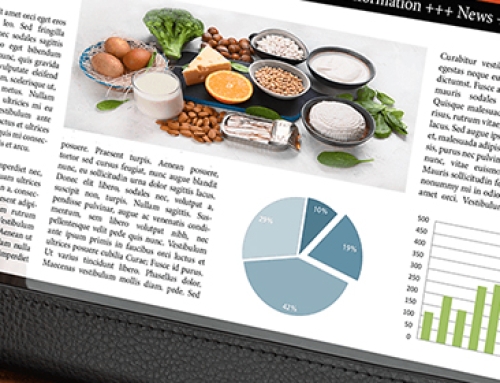Quality food is also safe food: Italian consumers agree with this equivalence. They do not agree instead on the characteristics that determine when a product is a quality one.
For some consumers food quality means mainly freshness and good organoleptic properties (good look, good taste). Others consider more the place and method of production: a quality food product has a short supply chain and is made with traditional methods (for example, it is an organic product).
This divergence in the perception of food quality by Italian people emerges from a research of the IZSVe Observatory on the customer needs. The study was based on survey conducted with a Computer Assisted Telephone Interview (CATI) methodology on a representative sample of 1000 Italian consumers and has been recently published in international scientific journal “Appetite”.
But that’s not all. “Tell me what you eat and I’ll tell you what you are,” a famous aphorism of Jean Anthelme Brillat-Savarin says. And that is just what IZSVe Observatory researchers have found, identifying an association between the way of perceiving food quality and some socio-demographic characteristics. There are in fact two different profiles of Italian food consumer, which is good to keep in mind when planning marketing activities and communication aimed at this audience.
Factors of quality assessment
The IZSVe Observatory research has identified three main evaluation factors considered by Italians to assess the quality of a food product:
- organoleptic properties: the majority of respondents (76.2%) assess the quality of food products based on the characteristics of the product itself, especially its seasonality, freshness, appearance and flavor;
- the place and methods of production: a minority of respondents (20.4%) considers mainly the characteristics of the production. These people considers local and organic products as quality products and rely on certifications about where and how food is produced to judge its quality;
- the brand and the price: only a little portion of respondents (2.4%) consider marketing factors such as the brand and price , comparing similar products with each other.
The two profiles of the Italian consumer
The collected data have also identified a correlation between perceptions of quality product and some socio-demographic characteristics of respondents.
In particular, the researchers analyzed the differences between respondents who judge the quality based on organoleptic properties (Group 1) and those who considered mainly place and method of production (Group 2).
Dependency between belonging to the two groups and the following characteristics emerged:
- the employment status (Group 1 consists mainly of workers, Group 2 consists mainly of retired people and students);
- geographical origin (while respondents in Central and Southern Italy were equally distributed between the two groups, Group 1 is prevalent in the North-West while Group 2 is prevalent in the North-East;
- the interest to read the label (prevalent in Group 1);
- degree of familiarity with issues of food seafty (members of Group 1 have more knowledge about these topics than those of Group 2).
The possession of particular characteristics (summarized in the following table) increases (↑) or decrease (↓) the possibility of belonging to one of the two main groups:
| GROUP 1. ORGANOLEPTIC PROPERTIES Quality as a fresh, good and good-looking product |
GROUP 2. PRODUCTION PLACE AND METHODS Quality as a local and organic product |
|
|---|---|---|
| Professional qualification / secondary school education | ↓ | |
| Live in the north-East, in the South and in the Islands | ↓ | ↑ |
| High level of knowledge about food risk | ↑ | |
| High level of self-assesment of knowledge | ↑ | |
| Being a household | ↓ | |
| Being employed | ↓ |
Why understanding how consumers perceive quality is important
Understanding how Italians perceive the quality of food products has important implication for marketing companies. Italy is the European country with the largest number of certified product by the European Union as PDO (Protected Designation of Origin) e PGI (Protected Geographical Indication).
 The market for these products is constantly expanding in the European lare-scale retail. According to the 2012 Report of the National Institute of Agricultural Economics it grew by 10% between 2010 and 2012. It is a relevant market particularly in Italy, where according to the Eurobarometer research about 35% of consumers say to check for certifications of quality in the products during purchase, and 82% of consumers say to be concerned about the quality of the food they eat (versus an average of 68% in Europe).
The market for these products is constantly expanding in the European lare-scale retail. According to the 2012 Report of the National Institute of Agricultural Economics it grew by 10% between 2010 and 2012. It is a relevant market particularly in Italy, where according to the Eurobarometer research about 35% of consumers say to check for certifications of quality in the products during purchase, and 82% of consumers say to be concerned about the quality of the food they eat (versus an average of 68% in Europe).
Knowing the perception of consumers is strategic also for those who deal with risk analysis. The sociodemographic profiles detected correspond in fact to different probabilities of exposure to certain food risks. For example, who consider homemade food and food purchased from local vendors as quality food can be exposed to microbiological hazards due to poor compliance with healthy practices during production.
At the same time the differences between the identified profiles are also useful to plan activities and campaigns of risk communication in the food safety field. For example the consumers who tend to read labels and have more knowledge on food safety issues and higher school qualifications, may be more inclined to read messages in the store and to prefer rational arguments, while for others it may be more useful to create most emotional messages based on the use of images.
Further information
IZSVe Observatory for customer needs
osservatorio@izsvenezie.it







